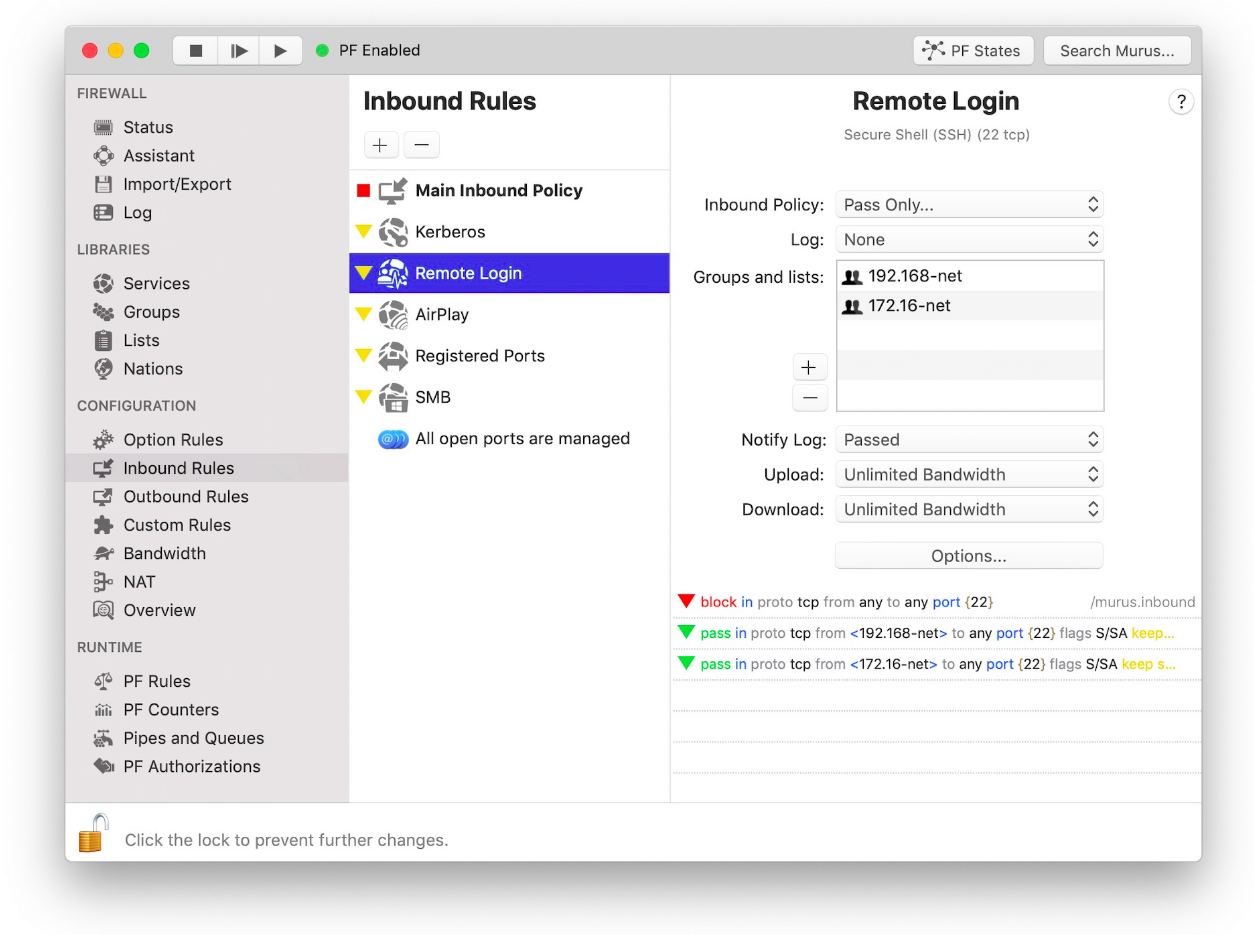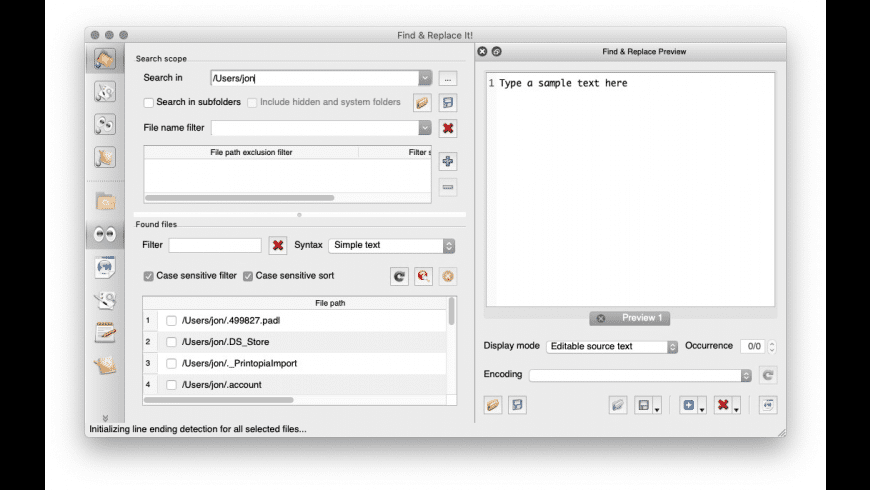NOTE:
Between mid October 2019 and mid February 2020 everyone in the Army was migrated to use their PIV Authentication certificate for Email access. You no longer use the Email certificate for Enterprise Email or any CAC enabled websites
Bib2x - The BibTeX Converter BibTex to Anything converter, using a flexible and powerful template language; JabRef An open source bibliography reference manager.; BibTool Powerful and well documented tool to manipulate BibTeX databases; BibTeX & Mac OS X. BibDesk A graphical BibTeX-bibliography manager; BibTeX & MS Word. Bibshare Very handy framework to use BibTeX with. Featured products. VNC® Connect. Simple, secure, ready-to-use remote access software for professionals and enterprises. VNC® Developer. Toolkits and solutions for integrating secure, real-time remote access. Register while downloading. It’s free and fast. To use Mendeley you’ll need to register. If your download didn't start, click here. If you need help installing, click here. Quickly add articles from any supported website directly into your reference library with a single click using Mendeley’s.
Mac users who choose to upgrade (or already have upgraded) to Mac OS Catalina (10.15.x) will need to uninstall all 3rd Party CAC enablers per https://militarycac.com/macuninstall.htm AND reenable the built in smart card ability (very bottom of macuninstall link above)
Find and compare top Salon software on Capterra, with our free and interactive tool. Quickly browse through hundreds of Salon tools and systems and narrow down your top choices. Filter by popular features, pricing options, number of users, and read reviews from real users and find a tool that fits your needs. Better BibTeX for Zotero. Better BibTeX (BBT) is an extension for Zotero and Juris-M that makes it easier to manage bibliographic data, especially for people authoring documents using text-based toolchains (e.g. Based on LaTeX / Markdown). Features Facilities for generating citation keys. Automatically generate citation keys without key clashes.
If you purchased your Mac with OS Catalina (10.15.x) already installed, you can skip the uninstall part above and follow the instructions below.
6 'high level' steps needed, follow down the page to make this a painless systematic process
| 1. | Is your CAC reader 'Mac friendly'? |
| 2. | Can your Mac 'see' the reader? |
| 3. | Verify which version of Mac OS you have |
| 4. | Figure out which CAC (ID card) you have |
| 5. | Install the DoD certificates |
| 5a. | Additional DoD certificate installation instructions for Firefox users |
| 6. | Decide which CAC enabler you want to use (except for 10.12-.15 & 11) |
Step 1: Is your CAC reader Mac friendly?
Visit the USB Readers page to verify the CAC reader you have is Mac friendly.
Visit the USB-C Readers page to verify the CAC reader you have is Mac friendly.
'Some, not all' CAC readers may need to have a driver installed to make it work.

NOTE: Readers such as: SCR-331 & SCR-3500A may need a firmware update (NO OTHER Readers need firmware updates).
Information about these specific readers are in Step 2
Step 2: Can your Mac 'see' the reader?

Plug the CAC reader into an open USB port before proceeding, give it a few moments to install
Step 2a: Click the Apple Icon in the upper left corner of the desktop, select 'About This Mac'
Step 2b: Click 'System Report...' (button)
Step 2c: Verify the CAC reader shows in Hardware, USB, under USB Device Tree. Different readers will show differently, most readers have no problem in this step. See Step 2c1 for specific reader issues.
Step 2c1: Verify firmware version on your SCR-331 or GSR-202, 202V, 203 CAC, or SCR-3500a reader. If you have a reader other than these 5, Proceed directly to step 3
Step 2c1a-SCR-331 reader
If your reader does not look like this, go to the next step.
In the 'Hardware' drop down, click 'USB.' On the right side of the screen under 'USB Device Tree' the window will display all hardware plugged into the USB ports on your Mac. Look for “SCRx31 USB Smart Card Reader.” If the Smart Card reader is present, look at 'Version' in the lower right corner of this box: If you have a number below 5.25, you need to update your firmware to 5.25. If you are already at 5.25, your reader is installed on your system, and no further hardware changes are required. You can now Quit System Profiler and continue to Step 3.
Step 2c1b-SCR-3500A reader
If you have the SCR3500A P/N:905430-1 CAC reader,you may need to install this driver, as the one that installs automatically will not work on most Macs. Hold the control key [on your keyboard] when clicking the .pkg file [with your mouse], select [the word] Open
Step 3: Verify which version of MacOS do you have?
(You need to know this information for step 6)
Step 3a: Click the Apple Icon in the upper left corner of your desktop and select 'About This Mac'
Step 3b: Look below Mac OS X for: Example: Version 10.X.X.
Step 4: Figure out which CAC (ID Card) you have
(You need to know this information for step 6)
Look at the top back of your ID card for these card types. If you have any version other than the six shown below, you need to visit an ID card office and have it replaced. All CACs [other than these six] were supposed to be replaced prior to 1 October 2012.
Find out how to flip card over video
Step 5: Install the DoD certificates (for Safari and Chrome Users)
Go to Keychain Access
Click: Go (top of screen), Utilities, double click Keychain Access.app
(You can also type: keychain access using Spotlight (this is my preferred method))
Select login (under Keychains),and All Items (under Category).
Download the 5 files via links below (you may need to <ctrl> click, select Download Linked File As... on each link) Save to your downloads folder
Please know... IF You have any DoD certificates already located in your keychain access, you will need to delete them prior to running the AllCerts.p7b file below.
https://militarycac.com/maccerts/AllCerts.p7b,
https://militarycac.com/maccerts/RootCert2.cer,
https://militarycac.com/maccerts/RootCert3.cer,
https://militarycac.com/maccerts/RootCert4.cer, and
Double click each of the files to install certificates into the login section of keychain
Select the Kind column, verify the arrow is pointing up, scroll down to certificate, look for all of the following certificates:
DOD EMAIL CA-33 through DOD EMAIL CA-34,
DOD EMAIL CA-39 through DOD EMAIL CA-44,
DOD EMAIL CA-49 through DOD EMAIL CA-52,
DOD EMAIL CA-59,
DOD ID CA-33 through DOD ID CA-34,
DOD ID CA-39 through DOD ID CA-44,
DOD ID CA-49 through DOD ID CA-52,
DOD ID CA-59
DOD ID SW CA-35 through DOD ID SW CA-38,
DOD ID SW CA-45 through DOD ID SW CA-48,
DoD Root CA 2 through DoD Root CA 5,
DOD SW CA-53 through DOD SW CA-58, and
DOD SW CA-60 through DOD SW CA-61
NOTE: If you are missing any of the above certificates, you have 2 choices,
1. Delete all of them, and re-run the 5 files above, or
2. Download the allcerts.zip file and install each of the certificates you are missing individually.
Errors:
Error 100001 Solution
Error 100013 Solution
You may notice some of the certificates will have a red circle with a white X . This means your computer does not trust those certificates
You need to manually trust the DoD Root CA 2, 3, 4, & 5 certificates
Double click each of the DoD Root CA certificates, select the triangle next to Trust, in the When using this certificate: select Always Trust, repeat until all 4 do not have the red circle with a white X.
You may be prompted to enter computer password when you close the window
Once you select Always Trust, your icon will have a light blue circle with a white + on it.
The 'bad certs' that have caused problems for Windows users may show up in the keychain access section on some Macs. These need to be deleted / moved to trash.
The DoD Root CA 2 & 3 you are removing has a light blue frame, leave the yellow frame version. The icons may or may not have a red circle with the white x
| or | DoD Interoperability Root CA 1 or CA 2 | certificate | |
| DoD Root CA 2 or 3 (light blue frame ONLY) | certificate | ||
| or | Federal Bridge CA 2016 or 2013 | certificate | |
| or | Federal Common Policy CA | certificate | |
| or | or | SHA-1 Federal Root CA G2 | certificate |
| or | US DoD CCEB Interoperability Root CA 1 | certificate |
If you have tried accessing CAC enabled sites prior to following these instructions, please go through this page before proceeding
Clearing the keychain (opens a new page)
Please come back to this page to continue installation instructions.
Step 5a: DoD certificate installation instructions for Firefox users
NOTE: Firefox will not work on Catalina (10.15.x), or last 4 versions of Mac OS if using the native Apple smartcard ability
Download AllCerts.zip, [remember where you save it].
double click the allcerts.zip file (it'll automatically extract into a new folder)
Option 1 to install the certificates (semi automated):
From inside the AllCerts extracted folder, select all of the certificates
<control> click (or Right click) the selected certificates, select Open With, Other...
In the Enable (selection box), change to All Applications
Select Firefox, then Open
You will see several dozen browser tabs open up, let it open as many as it wants..
You will eventually start seeing either of the 2 messages shown next
If the certificate is not already in Firefox, a window will pop up stating 'You have been asked to trust a new Certificate Authority (CA).'
Check all three boxes to allow the certificate to: identify websites, identify email users, and identify software developers
or
'Alert This certificate is already installed as a certificate authority.' Click OK
Once you've added all of the certificates...
• Click Firefox (word) (upper left of your screen)
• Preferences
• Advanced (tab)
• Press Network under the Advanced Tab
• In the Cached Web Content section, click Clear Now (button).
• Quit Firefox and restart it
Option 2 to install the certificates (very tedious manual):
Click Firefox (word) (upper left of your screen)
Preferences
Advanced (tab on left side of screen)
Certificates (tab)
View Certificates (button)
Authorities (tab)
Import (button)
Browse to the DoD certificates (AllCerts) extracted folder you downloaded and extracted above.
Note: You have to do this step for every single certificate
Note2: If the certificate is already in Firefox, a window will pop up stating: 'Alert This certificate is already installed as a certificate authority (CA).' Click OK
Note3: If the certificate is not already in Firefox, a window will pop up stating 'You have been asked to trust a new Certificate Authority (CA).'
Check all three boxes to allow the certificate to: identify websites, identify email users, and identify software developers
Once you've added all of the certificates...
• Click Firefox (word) (upper left of your screen)
• Preferences
• Advanced (tab)
• Press Network under the Advanced Tab
• In the Cached Web Content section, click Clear Now (button).
• Quit Firefox and restart it

Step 6: Decide which CAC enabler you can / want to use
Only for Mac El Capitan (10.11.x or older)
After installing the CAC enabler, restart the computer and go to a CAC enabled website
Best Bibtex Client For Mac Download
NOTE: Mac OS Sierra (10.12.x), High Sierra (10.13.x), Mojave (10.14.x) or Catalina (10.15.x) computers no longer need a CAC Enabler.
Try to access the CAC enabled site you need to access now
Mac support provided by: Michael Danberry
This article is for network administrators and others who manage their own network. If you're trying to join a Wi-Fi network, one of these articles should help:
- Mac: Connect to Wi-Fi and resolve Wi-Fi issues.
- iPhone, iPad, iPod touch: Connect to Wi-Fi and resolve Wi-Fi issues.
Before changing the settings on your router
- Back up your router's settings, in case you need to restore the settings.
- Update the software on your devices. This is critical to ensure that your devices have the latest security updates and work best with each other.
- First install the latest firmware updates for your router.
- Then update the software on your other devices, such as on your Mac and on your iPhone or iPad.
- On each device that previously joined the network, you might need to forget the network to ensure that the device uses the router's new settings when rejoining the network.
Router settings
To ensure that your devices can reconnect reliably to your network, apply these settings consistently to each Wi-Fi router and access point, and to each band of a dual-band, tri-band, or other multiband router.
Network name (SSID)

A single, unique name (case-sensitive)
The Wi-Fi network name, or SSID (service set identifier), is the name your network uses to advertise its presence to other devices. It's also the name that nearby users see on their device's list of available networks.
Use a name that's unique to your network, and make sure that all routers on your network use the same name for every band they support. For example, don't use common names or default names such as linksys, netgear, dlink, wireless, or 2wire, and don't give your 2.4GHz and 5GHz bands different names.
If you don't follow this guidance, devices might not connect reliably to your network, to all routers on your network, or to all available bands of your routers. And devices that join your network are more likely to encounter other networks that have the same name, and then automatically try to connect to them.
Hidden network
Disabled
A router can be configured to hide its network name (SSID). Your router might incorrectly use ”closed” to mean hidden, and ”broadcast” to mean not hidden.
Hiding the network name doesn't conceal the network from detection or secure it against unauthorized access. And because of the way that devices search for and connect to Wi-Fi networks, using a hidden network might expose information that can be used to identify you and the hidden networks you use, such as your home network. When connected to a hidden network, your device might show a privacy warning because of this privacy risk.
To secure access to your network, use the appropriate security setting instead.
Security
WPA3 Personal for better security, or WPA2/WPA3 Transitional for compatibility with older devices
The security setting defines the type of authentication and encryption used by your router, and the level of privacy protection for data transmitted over its network. Whichever level of security you choose, always set a strong password for joining the network.
- WPA3 Personal is the newest, most secure protocol currently available for Wi-Fi devices. It works with all devices that support Wi-Fi 6 (802.11ax), and some older devices.
- WPA2/WPA3 Transitional is a mixed mode that uses WPA3 Personal with devices that support that protocol, while allowing older devices to use WPA2 Personal (AES) instead.
- WPA2 Personal (AES) is appropriate when you can't use one of the more secure modes. In that case, also choose AES as the encryption or cipher type, if available.
Settings that turn off security, such as None, Open, or Unsecured, are strongly discouraged. Turning off security disables authentication and encryption and allows anyone to join your network, access its shared resources (including printers, computers, and smart devices), use your internet connection, and monitor data transmitted over your network or internet connection (including the websites you visit). This is a risk even if security is turned off temporarily or for a guest network.
Don't create or join networks that use older, deprecated security protocols like WPA/WPA2 Mixed Mode, WPA Personal, TKIP, Dynamic WEP (WEP with 802.1X), WEP Transitional Security Network, WEP Open, or WEP Shared. These are no longer secure, and they reduce network reliability and performance. Apple devices show a security warning when joining such networks.
MAC address filtering, authentication, access control
Disabled
When this feature is enabled, your router can be set up to allow only devices that have specified MAC (media access control) addresses to join the network. You shouldn't rely on this feature to prevent unauthorized access to your network, for these reasons:
- It doesn't prevent network observers from monitoring or intercepting traffic on the network.
- MAC addresses can easily be copied, spoofed (impersonated), or changed.
- To help protect user privacy, some Apple devices use a different MAC address for each Wi-Fi network.
To secure access to your network, use the appropriate security setting instead.
Automatic firmware updates
Enabled
If possible, set your router to automatically install software and firmware updates as they become available. Firmware updates can affect the security settings available to you, and they deliver other important improvements to the stability, performance, and security of your router.
Radio mode
All (preferred),or Wi-Fi 2 through Wi-Fi 6 (802.11a/g/n/ac/ax)
These settings, available separately for the 2.4GHz and 5GHz bands, control which versions of the Wi-Fi standard the router uses for wireless communication. Newer versions offer better performance and support more devices concurrently.
It's usually best to enable every mode offered by your router, rather then a subset of those modes. All devices, including older devices, can then connect using the fastest radio mode they support. This also helps reduce interference from nearby legacy networks and devices.
Bands
Enable all bands supported by your router
A Wi-Fi band is like a street over which data can flow. More bands provide more data capacity and performance for your network.
Bibtex Windows
Channel
Auto
Each band of your router is divided into multiple, independent communication channels, like lanes in a street. When channel selection is set to automatic, your router selects the best Wi-Fi channel for you.
If your router doesn't support automatic channel selection, choose whichever channel performs best in your network environment. That varies depending on the Wi-Fi interference in your network environment, which can include interference from any other routers and devices that are using the same channel. If you have multiple routers, configure each to use a different channel, especially if they are close to each other.
Channel width
20MHz for the 2.4GHz band
Auto orall widths (20MHz, 40MHz, 80MHz) for the 5GHz band
Channel width specifies how large of a ”pipe” is available to transfer data. Wider channels are faster but more susceptible to interference and more likely to interfere with other devices.
- 20MHz for the 2.4GHz band helps to avoid performance and reliability issues, especially near other Wi-Fi networks and 2.4GHz devices, including Bluetooth devices.
- Auto or all channel widths for the 5GHz band ensures the best performance and compatibility with all devices. Wireless interference is less of a concern in the 5GHz band.
DHCP
Enabled, if your router is the only DHCP server on the network
DHCP (dynamic host configuration protocol) assigns IP addresses to devices on your network. Each IP address identifies a device on the network and enables it to communicate with other devices on the network and internet. A network device needs an IP address much like a phone needs a phone number.
Your network should have only one DHCP server. If DHCP is enabled on more than one device (such as on both your cable modem and router), address conflicts might prevent some devices from connecting to the internet or using network resources.
DHCP lease time
8 hours for home or office networks; 1 hour for hotspots or guest networks
DHCP lease time is the length of time that an IP address assigned to a device is reserved for that device.
Wi-Fi routers usually have a limited number of IP addresses that they can assign to devices on the network. If that number is depleted, the router can't assign IP addresses to new devices, and those devices can't communicate with other devices on the network and internet. Reducing DHCP lease time allows the router to more quickly reclaim and reassign old IP addresses that are no longer being used.
NAT
Enabled, if your router is the only device providing NAT on the network
NAT (network address translation) translates between addresses on the internet and addresses on your network. NAT can be understood by imagining a company's mail department, where deliveries to employees at the company's street address are routed to employee offices within the building.
Generally, enable NAT only on your router. If NAT is enabled on more than one device (such as on both your cable modem and router), the resulting ”double NAT” might cause devices to lose access to certain resources on the network or internet.
Best Bibtex Client For Mac 2017
WMM
Enabled
WMM (Wi-Fi multimedia) prioritizes network traffic to improve the performance of a variety of network applications, such as video and voice. All routers that support Wi-Fi 4 (802.11n) or later should have WMM enabled by default. Disabling WMM can affect the performance and reliability of devices on the network.
Device features that can affect Wi-Fi connections
These features might affect how you set up your router or the devices that connect to it.
Private Wi-Fi Address
If you're connecting to a Wi-Fi network from an iPhone, iPad, iPod touch, or Apple Watch, learn about using private Wi-Fi addresses in iOS 14, iPadOS 14, and watchOS 7.
Location Services
Make sure that your device has Location Services turned on for Wi-Fi networking, because regulations in each country or region define the Wi-Fi channels and wireless signal strength allowed there. Location Services helps to ensure that your device can reliably see and connect to nearby devices, and that it performs well when using Wi-Fi or features that rely on Wi-Fi, such as AirPlay or AirDrop.
On your Mac:
- Choose Apple menu > System Preferences, then click Security & Privacy.
- Click the lock in the corner of the window, then enter your administrator password.
- In the Privacy tab, select Location Services, then select Enable Location Services.
- Scroll to the bottom of the list of apps and services, then click the Details button next to System Services.
- Select Wi-Fi Networking, then click Done.
On your iPhone, iPad, or iPod touch:
Bibtex Download
- Go to Settings > Privacy > Location Services.
- Turn on Location Services.
- Scroll to the bottom of the list, then tap System Services.
- Turn on Networking & Wireless (or Wi-Fi Networking).
Auto-Join when used with wireless carrier Wi-Fi networks
Wireless carrier Wi-Fi networks are public networks set up by your wireless carrier and their partners. Your iPhone or other Apple cellular device treats them as known networks and automatically connects to them.
Best Bibtex Client For Mac Free
If you see ”Privacy Warning” under the name of your carrier's network in Wi-Fi settings, your cellular identity could be exposed if your device were to join a malicious hotspot impersonating your carrier's Wi-Fi network. To avoid this possibility, you can prevent your iPhone or iPad from automatically rejoining your carrier’s Wi-Fi network:
- Go to Settings > Wi-Fi.
- Tap next to the wireless carrier's network.
- Turn off Auto-Join.

